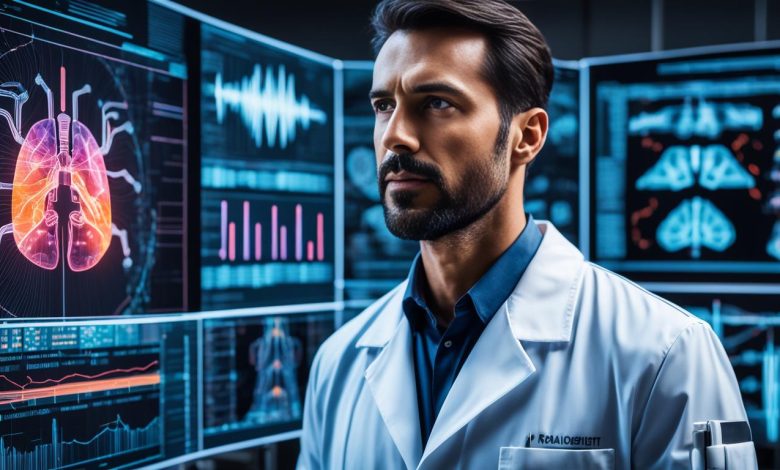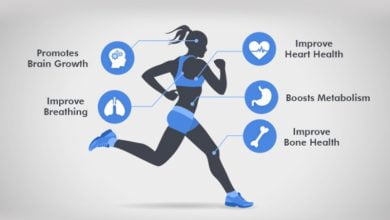The Cutting-Edge World of Medical Imaging and Diagnostics: A Comprehensive Guide to the Latest Advancements and Techniques

Introduction:
Medical imaging and diagnostics have undergone remarkable advancements in recent decades, revolutionizing the field of healthcare. From early detection of diseases to precise treatment planning, medical imaging technologies play a pivotal role in improving patient outcomes, enhancing clinical decision-making, and advancing medical research. This comprehensive exploration delves into the evolution, applications, benefits, and future prospects of medical imaging and diagnostics, highlighting their transformative impact on healthcare delivery and patient care.
Evolution of Medical Imaging:
The history of medical imaging dates back to the late 19th century, with the discovery of X-rays by Wilhelm Conrad Roentgen in 1895. Since then, medical imaging technologies have evolved rapidly, driven by technological innovation, scientific discoveries, and interdisciplinary collaboration. Key milestones in the evolution of medical imaging include:
X-ray Imaging:
X-ray imaging revolutionized medical diagnosis by enabling non-invasive visualization of internal structures, such as bones and soft tissues. X-ray technology remains a cornerstone of medical imaging, providing essential diagnostic information for a wide range of medical conditions, including fractures, tumors, and pulmonary diseases.
Computed Tomography (CT):
The development of CT imaging in the 1970s introduced three-dimensional visualization of anatomical structures, enabling detailed cross-sectional imaging of the body. CT scans offer superior spatial resolution and contrast resolution compared to conventional X-rays, making them indispensable for diagnosing conditions such as strokes, trauma, and cancer.
Magnetic Resonance Imaging (MRI):
MRI technology, introduced in the 1980s, utilizes magnetic fields and radio waves to generate detailed images of soft tissues, organs, and functional processes in the body. MRI scans provide exquisite anatomical and functional information, making them valuable for diagnosing neurological disorders, musculoskeletal injuries, and cardiovascular conditions.
Positron Emission Tomography (PET):
PET imaging combines molecular imaging and functional imaging techniques to visualize metabolic processes and disease activity within the body. PET scans are used in oncology, cardiology, and neurology to detect cancerous lesions, assess cardiac function, and evaluate brain function and metabolism.
Ultrasound Imaging:
Ultrasound imaging utilizes high-frequency sound waves to generate real-time images of internal organs, tissues, and blood flow. Ultrasound is safe, non-invasive, and versatile, making it suitable for a wide range of applications, including obstetrics, cardiology, and abdominal imaging.
Applications of Medical Imaging and Diagnostics:
Medical imaging and diagnostics have diverse applications across various medical specialties and clinical settings, including:
Diagnostic Imaging:
Medical imaging plays a crucial role in diagnosing a wide range of medical conditions, including fractures, tumors, infections, and cardiovascular diseases. Diagnostic imaging modalities such as X-ray, CT, MRI, and ultrasound provide clinicians with essential diagnostic information for accurate diagnosis and treatment planning.
Screening and Early Detection:
Medical imaging is used for screening and early detection of diseases such as cancer, cardiovascular diseases, and neurological disorders. Screening modalities such as mammography, colonoscopy, and CT colonography enable early detection of cancerous lesions, leading to timely intervention and improved prognosis.
Treatment Planning and Monitoring:
Medical imaging guides treatment planning and monitoring for various medical interventions, including surgery, radiation therapy, and chemotherapy. Imaging modalities such as CT, MRI, and PET provide clinicians with real-time visualization of tumor morphology, size, and response to treatment, facilitating personalized treatment strategies and optimization of patient care.
Interventional Procedures:
Medical imaging is used to guide minimally invasive procedures, such as biopsies, needle aspirations, and catheter-based interventions. Imaging modalities such as fluoroscopy, ultrasound, and CT provide real-time visualization of anatomical structures and needle placement, ensuring precise targeting and minimal invasiveness.
Research and Innovation:
Medical imaging technologies drive medical research and innovation, enabling scientists to study disease mechanisms, evaluate treatment efficacy, and develop novel diagnostic and therapeutic approaches. Imaging modalities such as functional MRI (fMRI), diffusion tensor imaging (DTI), and molecular imaging techniques support translational research efforts and advance our understanding of disease pathophysiology.
Benefits of Medical Imaging and Diagnostics:
The integration of medical imaging and diagnostics offers numerous benefits for patients, healthcare providers, and society as a whole, including:
Early Detection and Diagnosis:
Medical imaging enables early detection and diagnosis of diseases, leading to timely intervention, improved prognosis, and better patient outcomes.
Precision and Accuracy:
Medical imaging provides precise anatomical and functional information, guiding clinical decision-making, treatment planning, and surgical interventions with unparalleled accuracy.
Minimally Invasive Procedures:
Medical imaging facilitates minimally invasive procedures, reducing patient discomfort, shortening recovery times, and minimizing the risk of complications compared to traditional surgical approaches.
Personalized Medicine:
Medical imaging supports personalized medicine approaches by enabling individualized treatment strategies tailored to each patient’s unique anatomy, physiology, and disease characteristics.
Research and Innovation:
Medical imaging drives medical research and innovation, advancing our understanding of disease mechanisms, evaluating treatment efficacy, and facilitating the development of novel diagnostic and therapeutic approaches.
Challenges and Considerations:
Despite the significant benefits, medical imaging and diagnostics pose several challenges and considerations, including:
Radiation Exposure:
Ionizing radiation from X-ray and CT imaging carries potential risks of radiation exposure, particularly in pediatric patients and individuals undergoing repeated imaging studies. Radiation dose optimization strategies and appropriate imaging protocols are essential to minimize radiation risks while maintaining diagnostic efficacy.
Cost and Accessibility:
Advanced imaging modalities such as MRI and PET can be costly and may not be universally accessible, particularly in resource-limited settings. Addressing disparities in access to medical imaging requires investment in infrastructure, technology, and healthcare resources to ensure equitable access to diagnostic services.
Image Interpretation and Reporting:
Medical imaging studies require skilled interpretation by radiologists and healthcare providers to ensure accurate diagnosis and appropriate clinical management. Training programs, quality assurance measures, and standardized reporting protocols are essential to maintain high-quality imaging interpretation and reporting practices.
Data Management and Integration:
Medical imaging generates vast amounts of data that must be managed, stored, and integrated with electronic health records (EHRs) and clinical workflows. Interoperability standards, data exchange protocols, and health information technologies are necessary to facilitate seamless data integration and access across healthcare systems.
Ethical and Legal Considerations:
Medical imaging raises ethical and legal considerations related to patient privacy, informed consent, and data security. Safeguarding patient confidentiality, ensuring informed consent, and complying with regulatory requirements are essential to maintain patient trust and uphold ethical standards in medical imaging practice.
Future Directions and Opportunities:
The future of medical imaging and diagnostics holds immense promise for further advancements, innovations, and transformative impacts on healthcare delivery and patient care. Some future directions and opportunities include:
Artificial Intelligence and Machine Learning:
AI and machine learning algorithms hold the potential to revolutionize medical imaging interpretation, automating image analysis, pattern recognition, and diagnostic decision-making, leading to faster interpretation, enhanced accuracy, and personalized treatment recommendations.
Multimodal Imaging Integration:
Integration of multiple imaging modalities, such as MRI, PET, and molecular imaging, enables comprehensive characterization of disease processes, facilitating more accurate diagnosis, treatment planning, and monitoring across different medical specialties and clinical scenarios.
Point-of-Care Imaging:
Point-of-care imaging technologies enable bedside diagnosis and real-time monitoring of patients in diverse clinical settings, including emergency departments, intensive care units, and ambulatory care settings, enhancing patient triage, clinical decision-making, and timely intervention.
Imaging Biomarkers and Precision Imaging:
Advances in imaging biomarkers and precision imaging techniques enable quantitative assessment of disease severity, treatment response, and prognosis, guiding personalized medicine approaches and facilitating targeted therapies tailored to individual patient needs.
Imaging Informatics and Big Data Analytics:
Imaging informatics and big data analytics harness the power of healthcare data to extract actionable insights, identify patterns, and predict disease outcomes, driving advancements in population health management, predictive modeling, and precision medicine initiatives.
Conclusion:
Medical imaging and diagnostics play a critical role in modern healthcare, enabling early detection, accurate diagnosis, and personalized treatment of diseases. With continued technological innovation, interdisciplinary collaboration, and investment in research and development, medical imaging will continue to evolve, providing clinicians with increasingly powerful tools to improve patient outcomes, enhance clinical decision-making, and advance medical research. By harnessing the transformative potential of medical imaging and diagnostics, stakeholders can work together to address current challenges, seize future opportunities, and ensure the delivery of high-quality, patient-centered care for all
Screening and Early Detection: Pioneering Prevention in Healthcare
Introduction:
Screening and early detection programs are indispensable components of preventive healthcare, aimed at identifying diseases in their earliest stages when treatment is most effective. These initiatives have revolutionized healthcare by enabling timely intervention, reducing disease burden, and improving patient outcomes. This comprehensive exploration delves into the importance, methodologies, benefits, challenges, and future prospects of screening and early detection, highlighting their pivotal role in promoting population health and wellness.
The Importance of Screening and Early Detection:
Screening and early detection programs serve as critical tools in combating diseases by:
Facilitating Timely Intervention:
Early detection of diseases allows for prompt initiation of treatment, reducing disease progression, complications, and mortality rates.
Enhancing Treatment Efficacy:
Early-stage diseases are often more responsive to treatment, resulting in better treatment outcomes and improved prognosis for patients.
Reducing Healthcare Costs:
Screening and early detection programs can lead to cost savings by preventing advanced disease stages that require more intensive and costly interventions.
Improving Quality of Life:
Early detection enables individuals to receive timely medical care, alleviate symptoms, and maintain a higher quality of life by managing diseases effectively.
Fostering Public Health:
Population-based screening initiatives contribute to disease prevention, control, and public health surveillance, reducing the overall burden of disease in communities.
Methodologies of Screening and Early Detection:
Screening and early detection methodologies vary depending on the disease being targeted, available resources, and population demographics. Common screening modalities include:
Imaging Tests:
Radiographic imaging tests, such as mammography, colonoscopy, and computed tomography (CT) scans, are used for early detection of cancerous lesions, structural abnormalities, and anatomical changes.
Laboratory Tests:
Blood tests, urine tests, and other laboratory assays are employed to detect biomarkers, genetic mutations, and biochemical abnormalities associated with various diseases, including diabetes, hypertension, and infectious diseases.
Physical Examinations:
Clinical assessments, physical examinations, and routine health checks conducted by healthcare providers help identify signs, symptoms, and risk factors associated with underlying health conditions.
Genetic Testing:
Genetic screening and counseling services are utilized to assess individuals’ genetic predisposition to hereditary diseases, such as hereditary cancers, cardiovascular disorders, and genetic syndromes.
Screening Questionnaires:
Screening questionnaires, risk assessment tools, and health surveys are employed to evaluate individuals’ lifestyle behaviors, medical history, and risk factors for chronic diseases.
Benefits of Screening and Early Detection:
Screening and early detection programs offer numerous benefits for individuals, healthcare systems, and society as a whole, including:
Reduced Disease Mortality:
Early detection of diseases, such as cancer and cardiovascular diseases, leads to decreased mortality rates and improved survival outcomes for affected individuals.
Improved Treatment Outcomes:
Timely intervention allows for less aggressive treatment modalities, fewer complications, and better treatment response, resulting in improved patient outcomes and quality of life.
Prevention of Disease Progression:
Early detection enables healthcare providers to intervene at an early stage, preventing disease progression, complications, and irreversible damage to vital organs.
Cost Savings:
Screening and early detection programs result in cost savings by reducing healthcare expenditures associated with advanced disease stages, hospitalizations, and long-term care services.
Public Health Impact:
Population-based screening initiatives contribute to disease prevention, control, and public health surveillance, reducing the overall burden of disease and promoting healthier communities.
Challenges and Considerations:
Despite the significant benefits, screening and early detection programs face several challenges and considerations, including:
False Positives and False Negatives:
Screening tests may yield false-positive results, leading to unnecessary follow-up tests, anxiety, and overtreatment. Conversely, false-negative results may result in missed diagnoses and delayed intervention.
Overdiagnosis and Overtreatment:
Overdiagnosis occurs when screening detects indolent or non-progressive diseases that would not have caused harm during an individual’s lifetime, leading to unnecessary interventions and healthcare costs.
Risk of Harm:
Screening tests may carry risks of harm, such as radiation exposure from imaging tests, complications from invasive procedures, and adverse effects from overdiagnosis and overtreatment.
Access and Equity:
Disparities in access to screening and early detection services exist across populations, influenced by socioeconomic factors, geographic location, cultural beliefs, and healthcare disparities.
Ethical and Legal Considerations:
Ethical considerations, such as informed consent, patient autonomy, and privacy rights, must be addressed in screening and early detection programs to ensure respect for individuals’ rights and preferences.
Future Directions and Opportunities:
The future of screening and early detection holds promise for further advancements, innovations, and improvements in healthcare delivery, including:
Precision Screening:
Advancements in precision medicine and genomic testing enable personalized screening strategies tailored to individuals’ genetic predisposition, lifestyle factors, and disease risks.
Risk Stratification Tools:
Development of risk prediction models, artificial intelligence algorithms, and predictive analytics enhances risk stratification, enabling targeted screening interventions for high-risk populations.
Digital Health Technologies:
Digital health technologies, such as mobile health apps, wearable devices, and telemedicine platforms, expand access to screening and early detection services, particularly in underserved communities and remote areas.
Biomarker Discovery:
Advances in biomarker discovery, omics technologies, and molecular diagnostics facilitate the identification of novel biomarkers for early disease detection and prognostication.
Population Health Initiatives:
Population-based screening programs, public health campaigns, and community outreach efforts promote awareness, education, and uptake of screening and early detection services, fostering a culture of preventive healthcare.
Conclusion:
Screening and early detection programs are indispensable components of preventive healthcare, enabling timely identification and intervention for a wide range of diseases
By promoting early detection, healthcare providers can improve patient outcomes, reduce disease burden, and enhance population health. Moving forward, continued investment in research, innovation, and healthcare infrastructure is essential to address current challenges, seize future opportunities, and ensure equitable access to screening and early detection services for all individuals. By embracing a proactive approach to preventive healthcare, stakeholders can work together to promote health, wellness, and longevity for individuals and communities worldwide.
.
Introduction to medical imaging and diagnostics
Medical imaging and diagnostics play a crucial role in modern healthcare. They provide valuable insights into the human body, aiding in the diagnosis, treatment, and monitoring of various medical conditions. In this comprehensive guide, I will take you through the latest advancements and techniques in the field of medical imaging and diagnostics. From traditional X-rays to cutting-edge technologies like magnetic resonance imaging (MRI) and positron emission tomography (PET), we will explore the wide range of imaging techniques available today.
Importance of medical imaging and diagnostics in healthcare
Medical imaging and diagnostics have revolutionized the way healthcare professionals diagnose and treat patients. By providing detailed images of internal organs, tissues, and bones, these techniques enable accurate diagnoses, leading to timely interventions and improved patient outcomes. They are invaluable tools in various medical specialties, including radiology, cardiology, oncology, and neurology. Without medical imaging and diagnostics, many complex medical conditions would go undetected or misdiagnosed, resulting in significant delays in treatment.
Overview of different medical imaging techniques
There are several different medical imaging techniques used in healthcare today. X-rays, the most widely known imaging technique, use electromagnetic radiation to create images of bones and certain organs. Computed tomography (CT) scans provide detailed cross-sectional images of the body, allowing for the detection of tumors, fractures, and other abnormalities. Magnetic resonance imaging (MRI) uses powerful magnets and radio waves to generate detailed images of soft tissues, such as the brain, muscles, and organs. Ultrasound imaging, on the other hand, uses sound waves to produce real-time images of the body’s internal structures.
Advancements in medical imaging technology
Over the years, medical imaging technology has advanced rapidly, leading to improved image quality, faster scan times, and enhanced diagnostic capabilities. One such advancement is the introduction of 3D imaging, which provides a more comprehensive view of the body and allows for better visualization of complex structures. Another significant development is the emergence of digital imaging, which has replaced traditional film-based techniques. Digital imaging offers greater flexibility, faster image acquisition, and the ability to store and transmit images electronically.
The role of artificial intelligence in medical imaging and diagnostics
Artificial intelligence (AI) is revolutionizing the field of medical imaging and diagnostics. AI algorithms can analyze vast amounts of medical data and assist radiologists in interpreting images more accurately and efficiently. They can help identify patterns, detect abnormalities, and even predict patient outcomes. AI-powered technologies like computer-aided diagnosis (CAD) systems are becoming increasingly common in radiology departments, aiding in the early detection of diseases such as cancer. As AI continues to evolve, it holds the potential to transform the way medical imaging and diagnostics are practiced.
Emerging trends in medical imaging and diagnostics
The field of medical imaging and diagnostics is constantly evolving, with new trends and technologies continually emerging. One such trend is the integration of imaging modalities, where multiple imaging techniques are combined to provide a more comprehensive assessment of a patient’s condition. For example, combining PET and CT scans allows for both functional and anatomical imaging, leading to more accurate diagnoses. Another emerging trend is the use of molecular imaging, which involves the visualization of specific molecules or processes within the body. Molecular imaging techniques, such as PET and single-photon emission computed tomography (SPECT), enable the early detection and monitoring of diseases at a cellular level.
Benefits and limitations of medical imaging and diagnostics
Medical imaging and diagnostics offer numerous benefits, including non-invasiveness, painlessness, and the ability to detect diseases at an early stage. They provide valuable information that helps guide treatment decisions and monitor the effectiveness of interventions. However, these techniques also have their limitations. Some imaging modalities expose patients to ionizing radiation, which can be harmful in high doses. Additionally, certain imaging techniques may be contraindicated for individuals with specific medical conditions or implants. It is essential for healthcare professionals to weigh the benefits and risks associated with each imaging modality and select the most appropriate technique for each patient.
Applications of medical imaging and diagnostics in various medical specialties
Medical imaging and diagnostics find applications in a wide range of medical specialties. In radiology, they are used for the detection and characterization of tumors, assessment of organ function, and evaluation of trauma. Cardiologists rely on imaging techniques like echocardiography and cardiac MRI to diagnose and monitor heart conditions. Oncologists use imaging to stage cancers, monitor treatment response, and guide radiation therapy planning. Neurologists utilize imaging modalities such as MRI and CT scans to diagnose and study diseases affecting the brain and nervous system. The applications of medical imaging and diagnostics are extensive and continue to expand as new technologies emerge.
Considerations for choosing the right medical imaging and diagnostics equipment
When choosing medical imaging and diagnostics equipment, several factors need to be considered. These include the clinical requirements, desired image quality, patient safety, cost-effectiveness, and the availability of trained personnel. It is crucial to assess the specific needs of the healthcare facility and select equipment that aligns with those requirements. Additionally, regular maintenance and quality assurance programs should be implemented to ensure the equipment’s optimal performance and longevity.
Future prospects and challenges in the field of medical imaging and diagnostics
The future of medical imaging and diagnostics looks promising, with ongoing advancements in technology and the integration of AI. We can expect to see further improvements in image quality, faster scan times, and more precise diagnostic capabilities. However, along with these advancements come challenges. The increasing volume of medical imaging data poses a significant challenge in terms of storage, management, and analysis. Ensuring patient privacy and data security is another critical concern. Addressing these challenges will be essential to harness the full potential of medical imaging and diagnostics in the years to come.
Conclusion
Medical imaging and diagnostics have come a long way, transforming the practice of medicine and improving patient care. From traditional X-rays to state-of-the-art imaging technologies, the field continues to evolve, providing healthcare professionals with valuable tools for diagnosis, treatment, and monitoring. The future holds even more exciting possibilities, with AI and emerging trends shaping the landscape of medical imaging and diagnostics. As we navigate these advancements and challenges, it is crucial to prioritize patient safety, optimize resource utilization, and continue pushing the boundaries of medical knowledge. By doing so, we can ensure that medical imaging and diagnostics remain at the forefront of modern healthcare, delivering accurate diagnoses and better outcomes for patients.
CTA:
Stay informed about the latest advancements in medical imaging and diagnostics by subscribing to our newsletter. Sign up today to receive regular updates and stay ahead in the cutting-edge world of healthcare technology.




